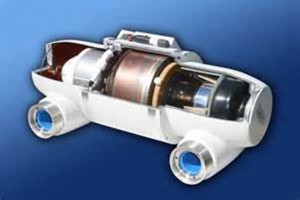 X-Ray tube housings are a key component to an X-ray system or CT machine. The X-Ray tube produces the radiation (X-ray) needed to conduct the imaging, but what does the x-ray housing do? X-ray housing performs a few key functions.
X-Ray tube housings are a key component to an X-ray system or CT machine. The X-Ray tube produces the radiation (X-ray) needed to conduct the imaging, but what does the x-ray housing do? X-ray housing performs a few key functions.
First, the X-ray housing needs to contain and focus those X-rays. An X-ray tube simply generates the X-rays and it will emit radiation in nearly every direction out from the X-ray target. These X-rays will flood the inside of the X-ray housing which means it will need to shield those X-rays and focus the outlet of radiation. X-ray housings achieve this by using lead lining to shield the radiation, whichis typically in tubes at or above 70kv. Below that, brass or other metals are frequently used.
The second function of an X-ray housing is heat dispersion. X-ray tubes are 97 percent inefficient; meaning that for all the energy put into the X-ray tube, 97 percent is lost as heat inside the housing. The X-ray housing must then be designed to allow oil or air to flow through it effectively for cooling. Some tubes are also designed to have cooling fins in them or bolted on to allow this heat to escape. If a tube overheats, it will shut off the tube by design. If this fails, the tube can overheat and break or cause other components to break.
The final function of the X-ray tube housing is for mounting purposes. For example, the CT machine will need to attach the X-ray tube to the gantry so it can be used. This sounds simple; however when you look at today’s CT systems that can rotate 3 to 4 times per second. If you consider the weight of the oil, filled housing could weigh up to 300 pounds and the G force could cause this tube housing to feel like 21,000 pounds. This means the structural design of a tube housing and the process of manufacturing is critical to the function of the X-ray system.
There is a lot that goes into the housing to ensure that your X-ray or CT goes as planned. Thanks to the extensive time X-ray tube engineers and high quality manufacturers like Vulcan GMS put into development, X-ray & CT systems continue to function when patients need them most all around the world. For more information, please contact us.

